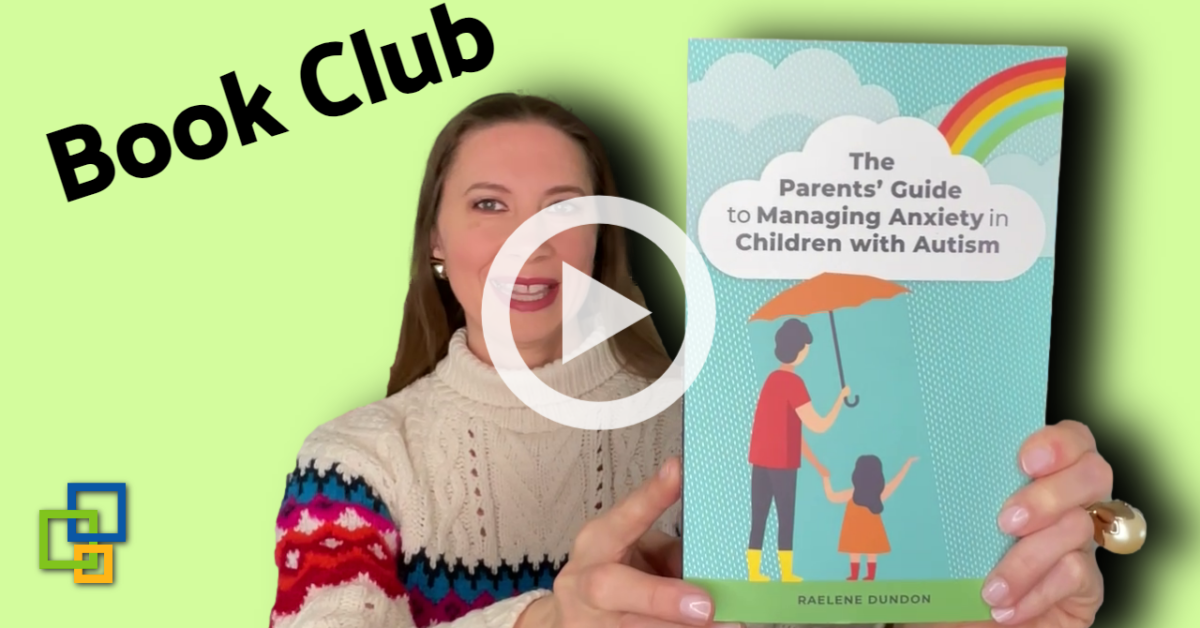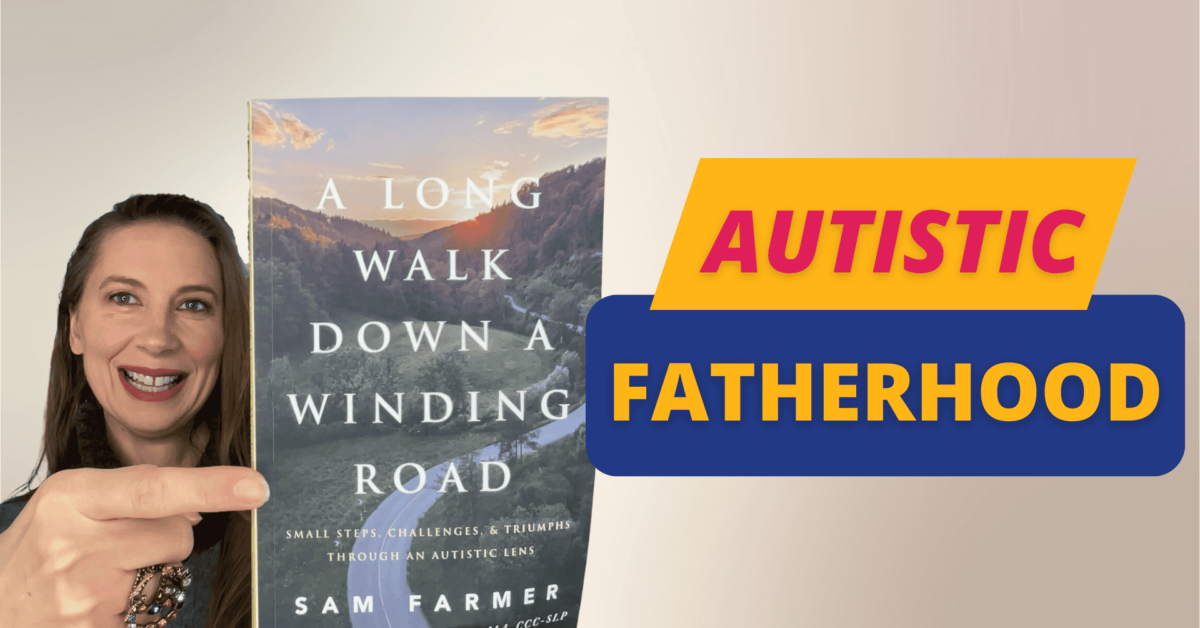This is a great book, but there is one aspect missing, and I’ll certainly point it out as we go along.
How Anxiety Affects the Body
The book first starts off by saying, how does anxiety affect the body?
It goes through and describes what anxiety is, how it can look very different in children and very different in children with autism, and even very different in children with autism, depending upon their age, depending on their level of vocalization, and communication. So there are many different factors that can influence what anxiety might look like in a child with autism.
I’m going to read a direct quote from here.
“When we talk about anxiety in general terms, there are three main components that need to be considered. There is a physiological response, which is the body’s reaction to the threat or perceived threat. There is a cognitive response in which we will think about something, about the situation or threat. And then there is a behavioral response, which is what we do in reaction to that feeling of anxiety.”
Many times when we see our children and we can see their behavior anxiety. That’s just one of the three ways it’s expressed. There are two other aspects to anxiety that you really want to keep in mind when you’re addressing anxiety.
“Why are anxiety disorders more common in autistic children and adolescents?” It has a good section on answering it, and it goes on to talk about rigid or inflexible thinking patterns that certainly can influence anxiety. Intolerance of uncertainty – that’s another aspect that influences anxiety. I will say one thing that this book is lacking is delving deep into health issues as to what is causing that anxiety. So anxiety is an emotion, and emotions are made up of neurotransmitters, right? So it’s chemistry. You can actually understand that chemistry of anxiety.
The Book Misses this
And this book doesn’t go into the health care aspects of anxiety, not necessarily just treating with a drug, but really understanding the root cause. Like, why does my child have such rigid thinking? What health aspect could be influencing that? So that’s not covered in this book, but it’s really important. This book is a great book, but it’s not all-encompassing, unfortunately.
It goes on in answering that question also about sensory sensitivity and communication difficulties. These are all different aspects that can contribute to why children with autism have higher instances of anxiety than others.
How Does Anxiety Appear in Young Children
It also answers the question, what does anxiety look like in young children with autism? And it has two small little case studies, and it’s about Ben, a four-year-old boy who gets distressed when his mom leaves. So he has anxiety about school when his mom is no longer around.
And then there’s Caitlin, a three-year-old. And this example is about how she’s generally happy, but she gets really aggressive in certain situations. She might bite her own hands, she might bite other people scratch, scream. And again, this is, for that child how anxiety looks for her.
The book goes on to say how it is important to understand that children express their anxiety in very different ways. And the little boy is able to use his words and say, Mommy, I’m going to miss you and things like that. Whereas Caitlin doesn’t have many words. So her physical behaviors are basically you could think of it as louder, right? Biting, biting herself, biting someone else, screaming. When someone doesn’t have words many times, they’re going to use their behaviors to really express their thoughts and feelings. There are also examples of what anxiety looks like in school-age children with autism and also adolescents with autism.
When Does the Child Need Help
Chapter four, the title is What Are the signs that a child needs help with their anxiety? Right? Anxiety. A certain amount of it is just a regular part of life. But then when anxiety starts to inhibit experiencing life and doing things and the quality of life is impacted, that’s when there might be something that needs to be done about the anxiety.
So it goes on to say, okay, how often does the child experience anxiety and how extreme is it? So if you’re concerned about Should I do something about the anxiety? This chapter definitely will help you flesh out, okay, is this really a problem? Is this just anxiety experiencing through life or is it really inhibiting life? So if you’re wondering about that for your child in this book, definitely be helpful because it will walk you through that process.
Supportive Parenting Behaviors
Chapter six, the title is What Are Supportive Parenting Behaviors? This is a really great chapter to go through because it talks about ineffective strategies – like dismissing worries.
Here’s an example of Ben, the four-year-old boy who has that separation anxiety, he really wants his mom around telling him, “Hey, don’t worry about it. You’ll get used to it.” It’s not the most effective strategy. And so it says, okay, here is what to do instead: Acknowledge feelings, stay calm yourself, and practice Emotion coaching (ie., how can you recognize that emotional anxiety in your child and coach them through it? Right?) You want them to be able to be empowered and to handle the situation eventually on their own. That’s the whole idea of parenting. So this book certainly goes into some examples on how to really empower your child so that anxiety doesn’t limit them in life.
Encouraging Mistakes and Celebrating Imperfection
One of the recommended ways is also to encourage mistakes and celebrate imperfection. Your child doesn’t have to be perfect. Maybe they go and do something that they have some anxiety about. It doesn’t go 100% well, but I don’t know, 50%?
Celebrate it! They took that step! They’re growing. The idea really is to empower and to nurture them so that they go out and experience life and try things on their own. That’s what you want to see. So encouraging mistakes and celebrating imperfections is certainly a great way to do that.
Practicing anxiety
Also providing safe opportunities to experience anxiety so you can create a situation where your child feels anxiety and successfully goes through it, right? So then you’re just building that muscle memory of “I can overcome anxiety! Ok, anxiety doesn’t have to limit me!”
So the more and more they have that experience of “Oh my gosh, I’m really scared to do something. I really don’t want this to happen.” The more they can overcome that with you as their guide, the better prepared they are for life and I know that’s exactly what you want for them.
Conclusion
There are some great examples in this book. I highly recommend it.
If you’re trying to figure out alright, is my child limiting their life by having anxiety, or are they experiencing the levels of anxiety that just come with life and growing and doing new things? This book certainly would be helpful if you want to understand any other aspects of anxiety.
I think this is a quick read, so not hugely difficult to read, not big. I think it’s a great resource. Again, it doesn’t cover the health aspects that contribute to anxiety. There are certain gut infections that can actually influence rigidity and uncertainty. So this book is, I don’t know, about half the story. The other half is really making sure that your child’s health is optimal.





